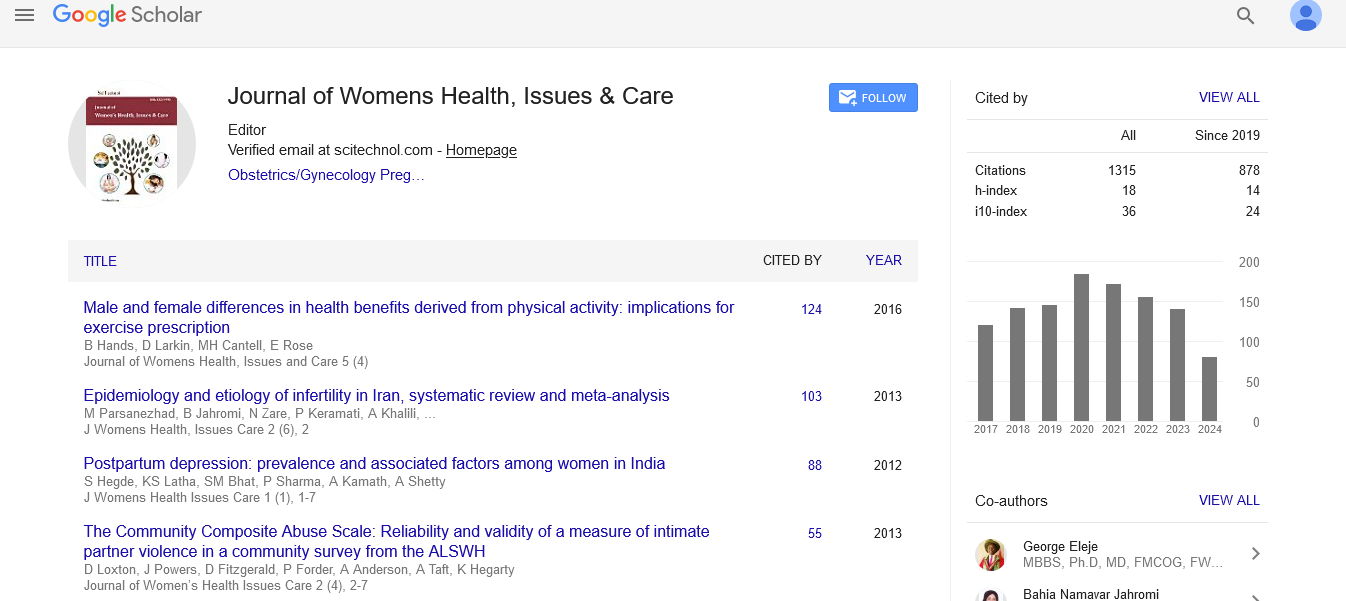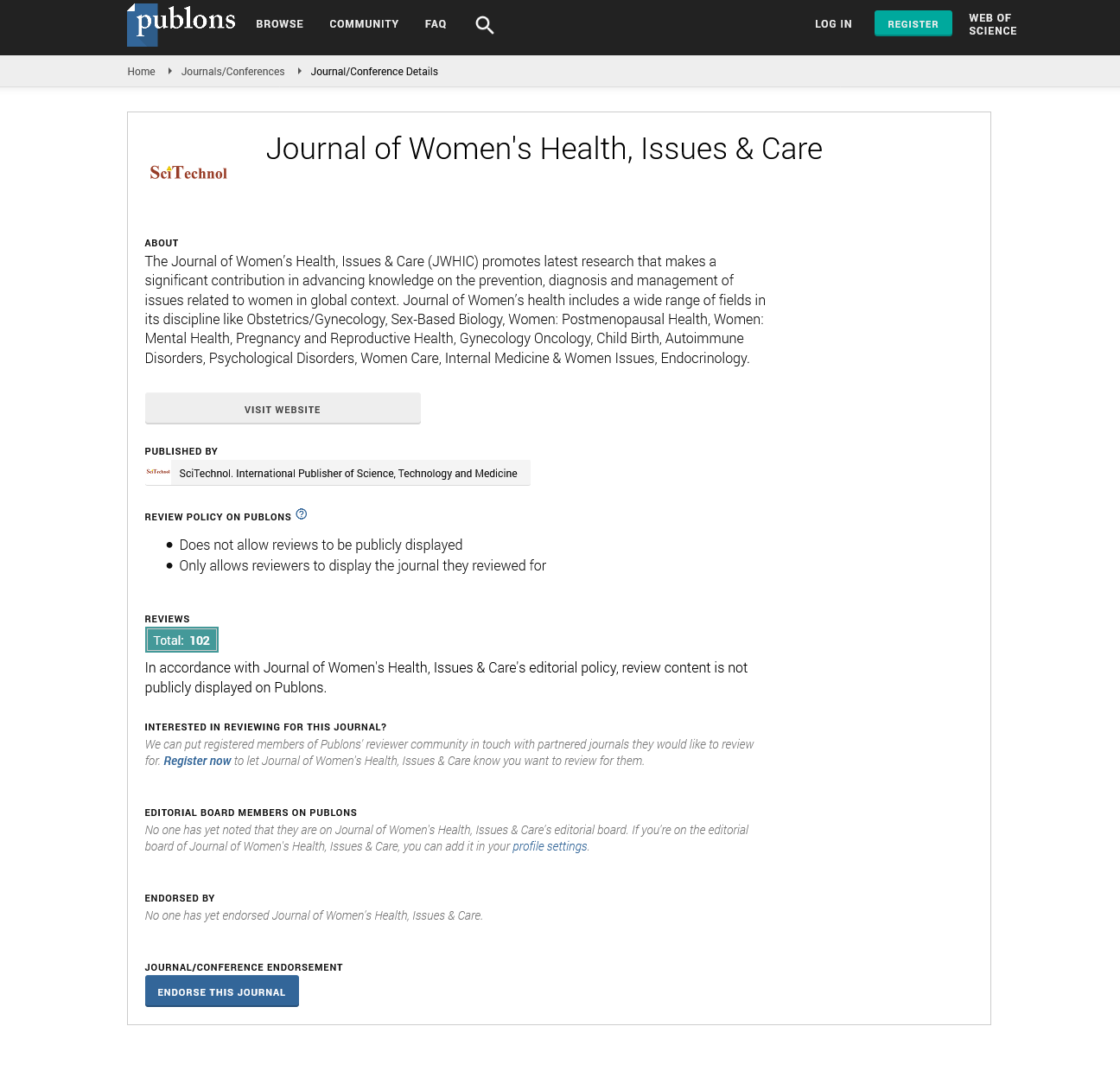Cervical cytology in oncopathology of women in lmic
Nandini N M
JSS Academy of Higher Education and Research, India
: J Womens Health, Issues Care
Abstract
The various types of lesion of female reproductive tract vary depending upon factors like age, parity, socio-physical activities, hormonal status and geographical location. Some of these factors are more significant in underdeveloped parts of globe. Inflammatory conditions are by far the most common, but dependable no. of glandular hyperplasia is also seen in endometrium. Benign lesions particularly affecting ovaries in the form of cysts, and intraepithelial neoplasia are also very common. Malignant tumors of cervix and endometrium are the commonest lesions among female reproductive organs. The incidence of endometrial carcinoma is more common in western world and cervical carcinoma is most frequent in Latin America and Asian countries. In different parts of India and adjacent countries, studies related to female genital organs were attempted and almost all of them concluded with cervical carcinoma as the commonest malignant neoplasm. our study from a tertiary referral hospital is also having the same findings. Late presentations of cases are also a considerable problem due to lower literacy rate, shyness and social stigma among females especially rural ones. In combating the incidence, the role of preventive measures is immense. In the developing world, health education to females is indispensable to overcome it. Cervical cytology plays an important role in the detection of malignant conditions of the female genital tract mainly the cervix, endometrium , ovary. conventional pap smear is an commonly used method for screening which has helped to detect and reduce cancers of the female genital tract, It has its limitations which can be overcome by liquid based cytology and other ancillary studies like hpv testing and cell block studies.
Biography
Nandini N.M is a dedicated researcher and academician at the JSS Academy of Higher Education and Research, India. Her work focuses on cervical cytology and oncopathology, particularly in the context of women's health in low- and middle-income countries (LMICs). With a strong background in pathology and cancer screening, Dr. Nandini aims to enhance early detection and prevention strategies for cervical cancer, contributing to improved outcomes in resource-limited settings.
 Spanish
Spanish  Chinese
Chinese  Russian
Russian  German
German  French
French  Japanese
Japanese  Portuguese
Portuguese  Hindi
Hindi 



